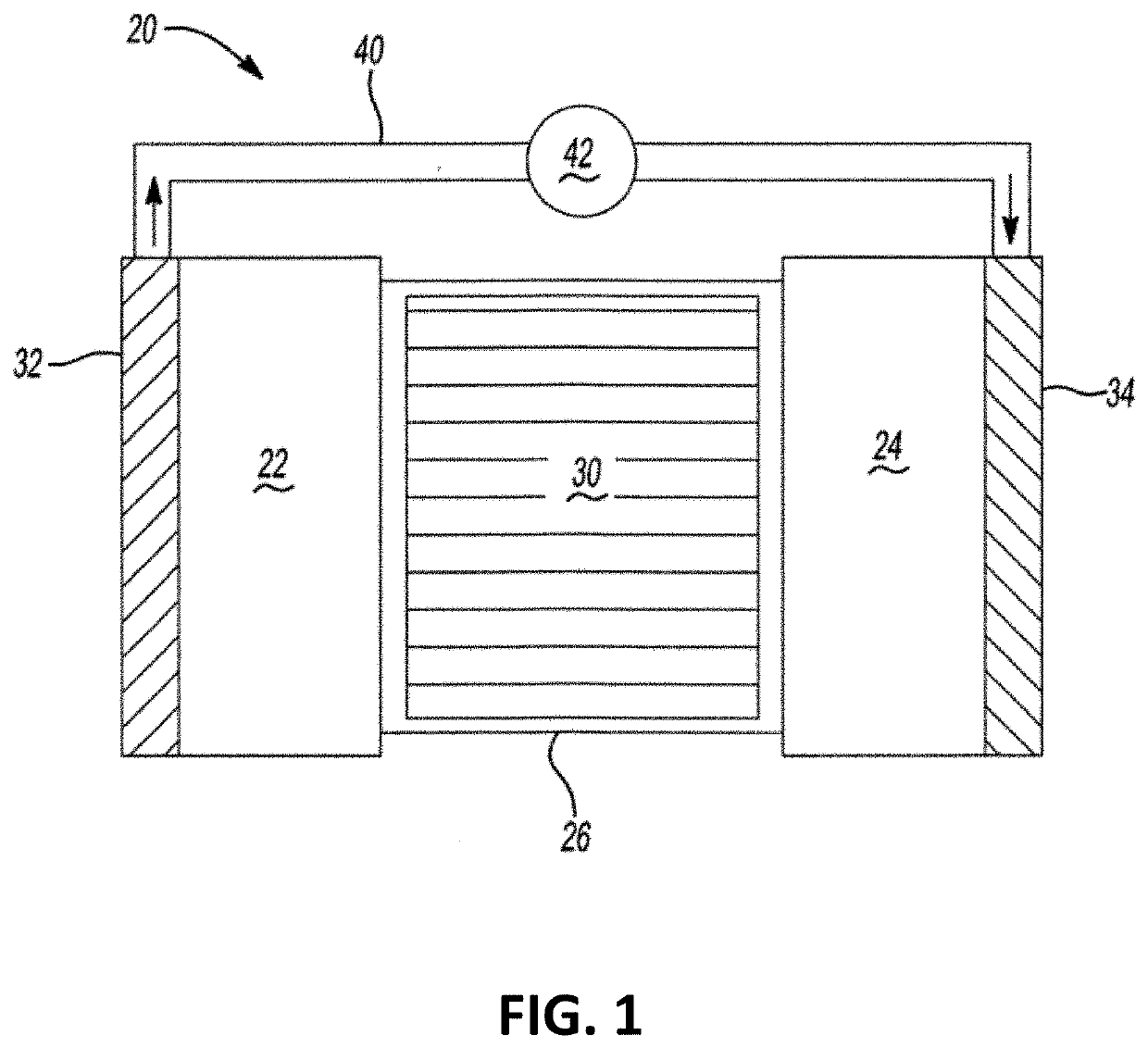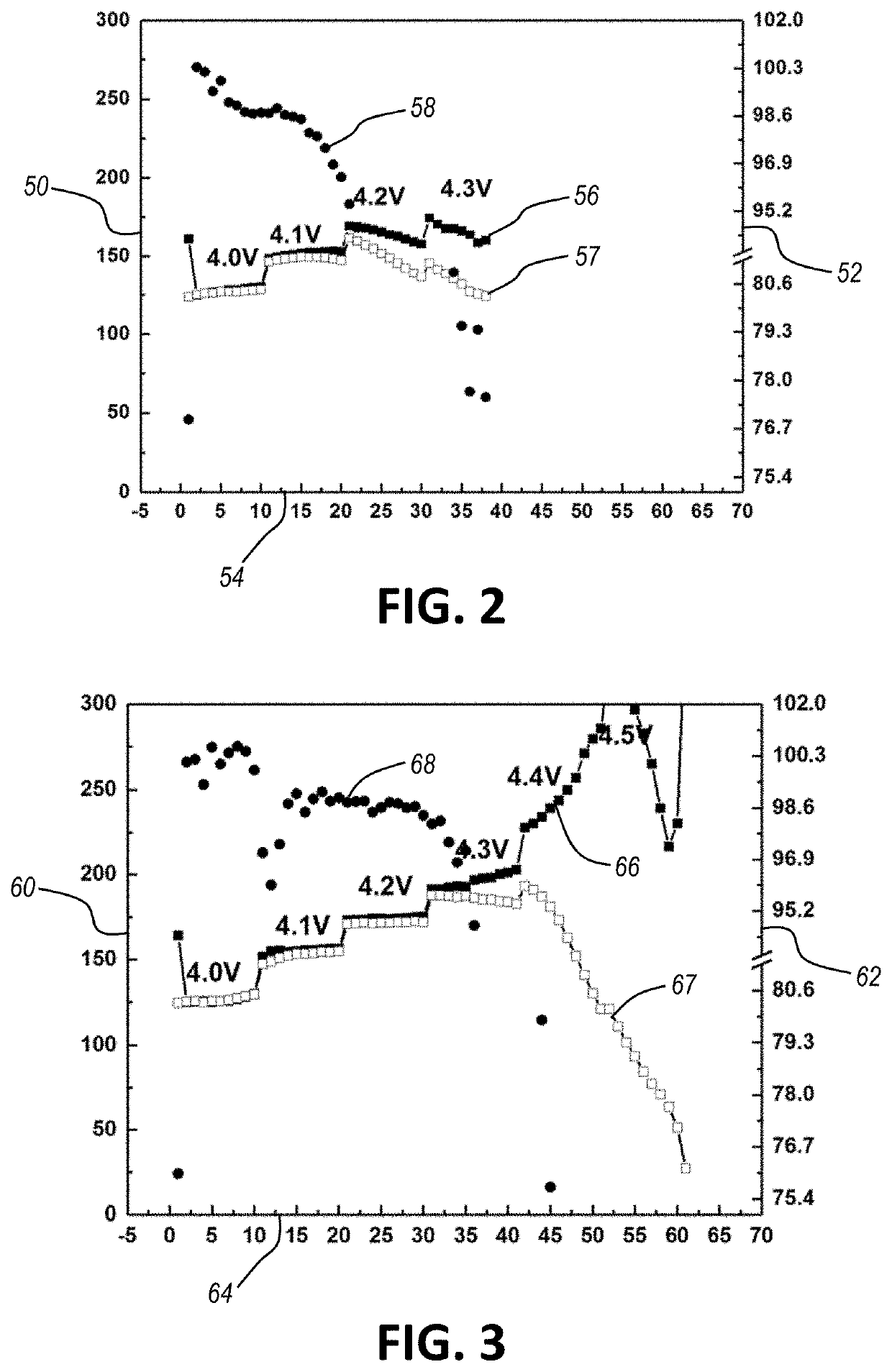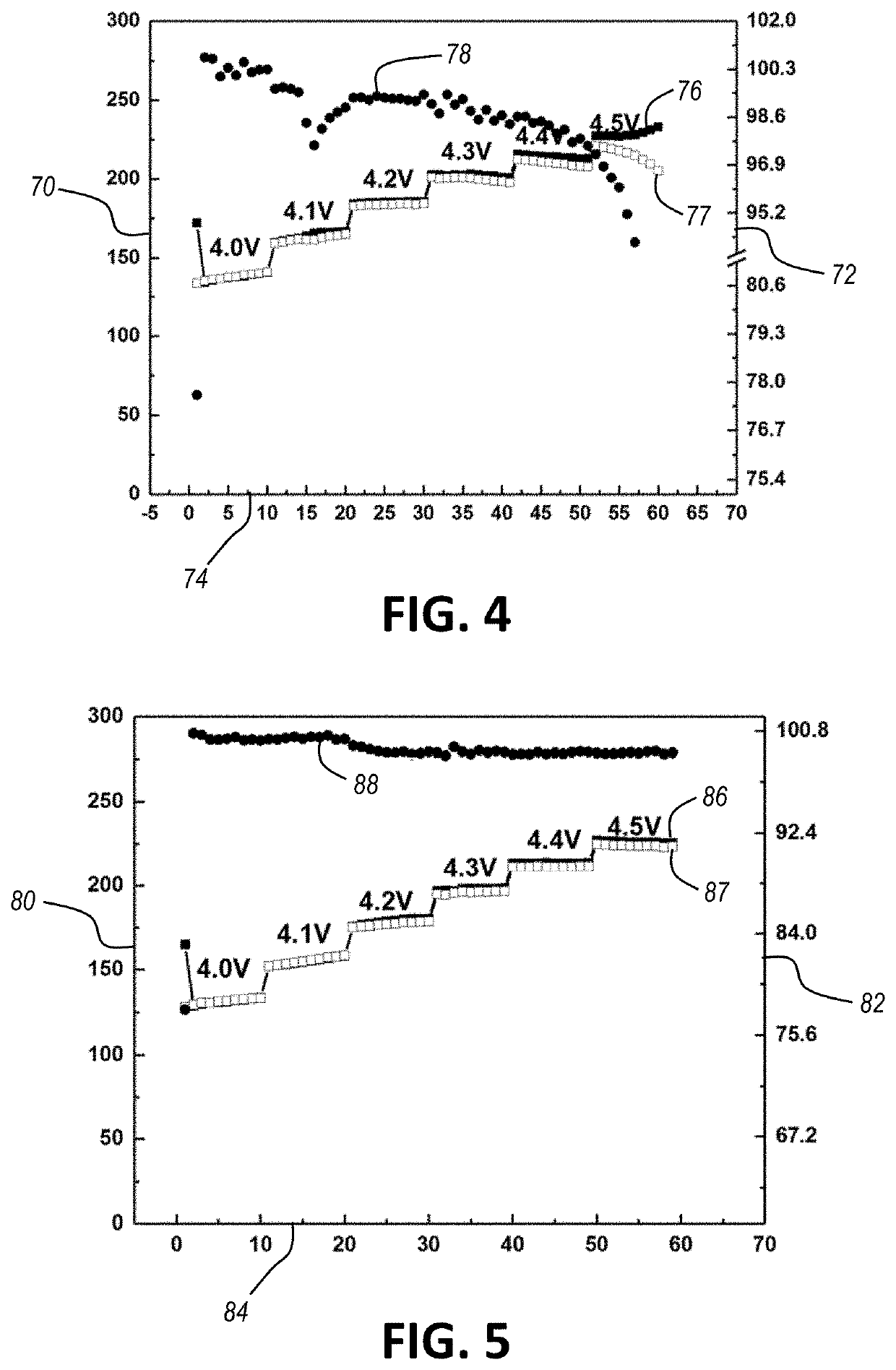Ionic liquid electrolytes for high voltage battery application
a high-voltage battery and ionic liquid electrolyte technology, which is applied in the direction of cell components, final product manufacturing, sustainable manufacturing/processing, etc., can solve the problems of poor high-voltage stability, high volatile and flammable, and the inability of ionic liquid electrolyte to passivate, etc., to achieve the effect of improving anodic stability
- Summary
- Abstract
- Description
- Claims
- Application Information
AI Technical Summary
Benefits of technology
Problems solved by technology
Method used
Image
Examples
example 1
[0079]Methods.
[0080]3-4.2 V constant current charge and discharge (CC-CD) under the rate of C / 10 formation is used for two cycles. Different upper cutoff voltages CC-CD C / 2 cycling are utilized in the procedure from 4 V to 4.5 V.
[0081]Results.
[0082]An electrochemical cell including a low loading NCM622 cathode, a Li metal anode, and an electrolyte of Py13FSI with 1 M LiFSI is cycled. The results are shown in FIG. 2, which is a graph having a first y-axis 50 representing capacity (mAh / g), a second y-axis 52 representing efficiency, and an x-axis 54 representing cycle number. A first curve 56 shows charge capacity, a second curve 57 shows discharge capacity, and a third curve 58 shows efficiency. As shown in FIG. 2, the electrochemical cell breaks down after 4.1 V due to a high voltage instability of the ionic liquid electrolyte.
[0083]An electrochemical cell including a low loading NCM622 cathode, a Li metal anode, and an electrolyte of Py13FSI with 1 M LiFSI and 2 wt. % lithium diflu...
example 2
[0089]An ionic liquid electrolyte composition is used to initiate a Si electrode. Electrochemical cells include a 60 μm lithium chip anode and a cathode with 15% Hitachi Mage 130808 nano-sized and amorphous silicon. FIGS. 10A, 10B, and 10C show graphs having a first y-axis 130 representing capacity (mAh / g), a second y-axis 132 representing efficiency (%), and an x-axis 134 representing cycle number. FIG. 10A shows a first curve 136 showing charge capacity, a second curve 137 showing discharge capacity, and third curve 138 showing efficiency in an electrochemical cell having a “Gen2” electrolyte of 1.2 M LiPF6 in ethylene carbonate / ethyl-methyl carbonate (EC / EMC=3 / 7 as a volume ratio). FIG. 10B shows a first curve 140 showing charge capacity, a second curve 141 showing discharge capacity, and a third curve 142 showing efficiency in an electrochemical cell having a Gen2 electrolyte of 1.2 M LiPF6 and 10 wt. % FEC in EC / EMC (3 / 7 volume ratio). FIG. 10C shows a first curve 144 showing c...
example 3
[0090]An ionic liquid electrolyte composition is used to initiate a Si anode with a NCM622 cathode in a high voltage lithium ion battery. A first electrochemical cell includes a 15% Si@graphite anode, a NCM622 cathode, and an electrolyte of 1 M LiFSI in Py13FSI. FIG. 11A shows a graph having a first y-axis 150 representing area capacity (mAh / g), a second y-axis 152 representing efficiency (%), and an x-axis 154 representing cycle life (number). A first curve 156 shows discharge capacity, a second curve 157 shows charge capacity, and a third curve 158 shows efficiency for the first electrochemical cell. The first electrochemical cell has a 4.2 V cut off. FIG. 11B is a scanning electron microscopy (SEM) image of the harvested cathode of the first electrochemical cell, which shows electrolyte decomposition. FIGS. 11A and 11B show that the ionic liquid can passivate the Si electrode successfully, but suffers from anodic instability.
[0091]A second and a third electrochemical cell each in...
PUM
| Property | Measurement | Unit |
|---|---|---|
| voltage | aaaaa | aaaaa |
| voltage | aaaaa | aaaaa |
| voltage | aaaaa | aaaaa |
Abstract
Description
Claims
Application Information
 Login to View More
Login to View More - R&D
- Intellectual Property
- Life Sciences
- Materials
- Tech Scout
- Unparalleled Data Quality
- Higher Quality Content
- 60% Fewer Hallucinations
Browse by: Latest US Patents, China's latest patents, Technical Efficacy Thesaurus, Application Domain, Technology Topic, Popular Technical Reports.
© 2025 PatSnap. All rights reserved.Legal|Privacy policy|Modern Slavery Act Transparency Statement|Sitemap|About US| Contact US: help@patsnap.com



